Rare US tanker grouping « Lt. Hanssen Schenker »
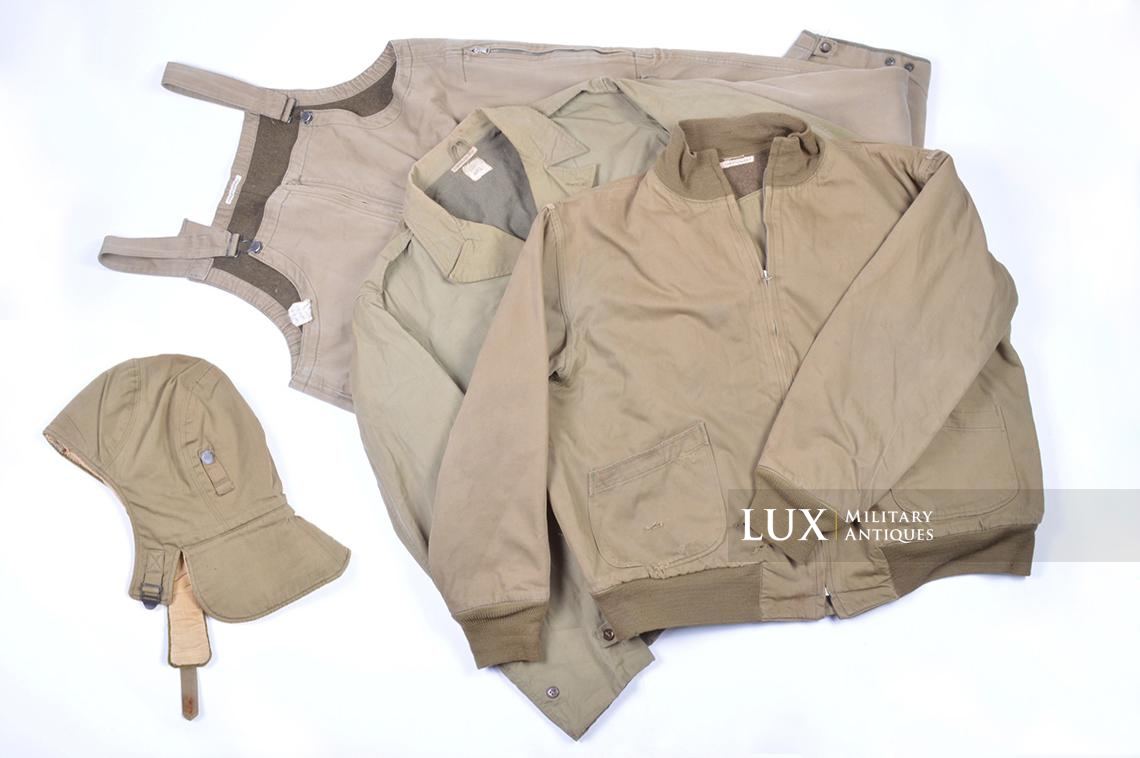
Description
Very nice and rare US tanker grouping of « Lt. Hanssen Schenker », found recently in the US, all uniform pieces are large size, including first model tankers jacket. Always a pleasure to see the first type in excellent condition. Large wearable size (40L). Textbook full-length zipper, factory applied by known maker « TALON ». Wool wrist and cuff knits are in excellent shape no repairs. « 1st Lt. » bars are hand applied and made of cotton thicker type. On the wearers right side pocket there is two small holes and one small rip, definitely war time but doesn't distract from the overall appearance. Jacket is missing the factory tag but named and serial numbered on the bottom right closure to « Hanssen Schencker » serial number « S7736 ». Very hard to find first model tanker jacket. Also including the M-41 field jacket in very nice slightly worn condition. Some minor light storage and stains. Retains its original QM tag, dated 1942. Cloth size tag is present, size « 40L ». Zipper is full-length, functional, and made by « TALON ». Green wool lining is in excellent shape and shows only minimal use. All buttons present and original stitched. Its tanker coveralls comes with the grouping and is in nice worn condition.All zippers present and functional by « TALON ». Wool green lining is in excellent shape, couple of marks along the belt area and some wear on the wearers back side. No frying on the leg bottoms, named as well. Tanker hood in great condition and part of the above group, very large size. Hood has cloth name tag also on the wearers top. This is truly a very nice and interesting early Tanker grouping !
1st Lt Hanssen Schenker, A Company Commander, 774th Tank Battalion "the Blackcats", attached to 83rd Infantry Division. Received commendation for tank support to 330th Infantry Regiment, 83rd Infantry Division.
On 25 August 1944, the 774th Tank Battalion disembark at Utah beach. The first mission assigned the 774th was to protect General Patton’s right flank in his push through France. Here the Battalion gave armored support in facilitating the surrender of General Bothe-Hemmeling Elster and his 20,000 Nazi troops at Beaugency.
By October, the Blackcats were in Luxembourg supporting Infantry in cleaning out towns along the Moselle River and were employed in the secondary mission sending over 11,000 rounds of indirect fire into German soil across the river.
In early December, the Battalion moved in the bloody Hurtgen Forest front in Germany to support the 83d Infantry Division in driving the enemy from the area southwest of Duren to the Roer river. December 8th marked the initial phases of the operation. The difficulties of this attack were apparent from its inception. The enemy had made extensive and strategic employment of mines throughout the area held high terrain affording his use of direct fire weapons to canalize approa ches to the Roer.
On 10 December, Companies B and C attacked the key towns of Gey and Strass respectively, and met fierce opposition from enemy tanks, high velocity antitank guns and machine gun fire as well as undergoing mortar and artillery fire. Elements of the two companies and infantry succeeded in reaching the towns but were almost entirely cut off during the three succeeding days. Limited quantities of supplies and ammunition were brought them, under cover of darkness by tanks of A and D companies, over routes that had been re-mined and that were under constant observed artillery and mortar fire. Losses in tanks and men were heavy but the positions taken were retained despite strong counterattacks and by 16 December both Gey and Strass were firmly secured, with the following know losses to the enemy: 286 personnel killed and 553 captured, 48 heavy guns and machine guns emplacements destroyed, 15 tanks or armored cars and much miscellaneous equipment either captured or destroyed.
Rehabilitation and reorganization of the Battalion was now undertaken while most of the platoons were yet engaged in the continuing operation. With many platoons reduced to 2 and 3 tanks each, they proceeded against heavy odds to take the towns of Gurzenich, Berzbuir, Birgel and Winden.
All elements were alerted on the 17th of December for anti-airborne defense due to the enemy counter offensive and increase of enemy air activity. For the following 7 days the area was patrolled day at night for enemy paratroopers. The Battalion blocked critical road points with fire and all suspicious individuals were challenged beyond doubt. Most of the tanks closed in a new area for indirect fire missions under the control of Field Artillery. Other elements made reconnaissance for prepared dug in defense positions in their respective sectors.
On 24 December the Battalion, less “B” Company, was attached to the 104th Infantry Division, firing indirect fire under Field Artillery control, on the towns of Duren, Karthaus, Kreuzaun and Merzenich, continuing throughout Christmas and the following day.
December 26, the Battalion reverted to the 83rd Infantry Division and was reassigned to the First Army, moving 62 miles the next day, by way of Aachen and Mondave Pont Du Bonne, to a new area in the vicinity of Jeneffe, Belgium. From this date to 20 January 1945 the Blackcats were constantly engaged in supporting infantry in both defensive and offensive missions against the Germans in their break through. Plans called for attacking with the 83d from the north flank to the “Bulge”.
During this entire period icy roads deep snow, mines and difficulty of identification made tank fighting extremely hazardous and restricted fire and movements tactics. To cite one of many similar missions, the 1st and 2nd platoons of C Co began an attack against Petite-Langlir on 12 January with 10 tanks and reached their objective with 3 operational.
On 13 January, in the course of an extremely difficult mission of flushing the enemy from the Bois De Ronce, during which General Models’ CP was taken, two enemy soldiers came forward with upraised hands. As they approached, and upon closer inspection they were found to be shielding a bazooka team. The commander of our forward tank fired one round of HE into the group, annihilating the bazooka team.
The 774th, in the Ardennes battle, assisted the 83d Division in the capture of the following Belgium towns: Bihain, Petit-Langlir, Langlher, Honyelez, Longechamps, Bovigny and Courth. During their stay on the line they opposed elements of eight enemy divisions: the 2d, 9th, 130, 116 Pz Divs, 2d SS Pz divisions, 12th and 560th Volksgrenadier.
On 21 January, the Battalion travelled 32 miles to Longueville, Belgium, remaining through 1 February performing maintenance, checking equipment and reorganizing. During this period numerous conferences were held relative to combat experience of tanks used with infantry and intensive training was carried on in conjuction with associated infantry units, working towards a more effective coordination for future operations.
On 3 February the entire Battalion was relieved from attachment to the 83rd Infantry Division and attached to the 78th Infantry Division, moving 53 miles to Rotgen, Germany.
By the 5th all combat units of the Battalion had moved forward, through the Seigfried Line defenses, into positions with the 309th and 310th Infantry Regiments to launch a major attack, the ultimate objective being the Schwammenauel Dam, vital key to defense positions in the Roer Vally south of Duren. This huge earthen dam held back a large artificial lake, which if entirely released by the enemy would result in flooding a great length of the valley and stopping any further advance into enemy territory on this front for a long time. Guarding the approaches to this vital dam was an area of several hundred square miles, known to be defensively prepared, and the immediate mission was to destroy the enemy in this area, before enemy engineers could perpetrate their plan to blow the dam.
From 6 February to 10 February the Blackcats, in support of infantry, fought a fiercely contested battle for this ground. Many permanent enemy fortifications were destroyed by direct tank fire. Heavy machine gun and small arms resistance were overrun and enemy strong points on the high hills east of Schmidt were reduced by indirect fire. Our losses were considerable, especially in the vicinity of Schmidt which was heavily mined, but all objectives were taken and friendly engineers successfully reached the control towers of the dam, reporting no demolitions except that valves had been jammed in the open position, letting a part of the great body of water through a secret sluice gate. Even this was sufficient to partially flood the river and increased its speed beyond the point where it could be bridged under combat conditions.
hrough the balance of February the Battalion waited on the west bank of the Roer, under daily enemy artillery fire, training reinforcements and readying equipment for the crossing. The Assault Gun and Motor platoons kept more than busy, firing over 1850 rounds on observed enemy targets during this period.
On 1 March the Battalion crossed the Roer and closed at Nideggen, several platoons jumping off immediately in the drive to the Rhine river. On those rolling plains the tanks were in their element and in the eight days of this fast moving operation, the 774th was credited with assisting infantry in taking 23 towns, capturing several hundred prisoners and destroying a large number of enemy guns and vehicles. The Battalion CP changed almost daily, everyone was on the move, and on 9 March the first units of the Battalion crossed the historic Rhine on the partially demolished Luedendorf Railroad Bridge at Remagen.
On 10 March the rear elements of the Battalion were ferried across, being unable to use the bridge because of almost incessant air bombing attacks and an intense concentration of enemy artillery trying desperately to destroys our tiny hold on the east bank of the river. One Service Company truck, loaded with ammunition, had received a direct hit as it was leaving the bridge and went up in flames. By 1400 the entire Battalion was on the east bank, under heavy artillery fire to be sure, but there ready for action the first separate Tank Battalion to reach this long sought, and fought for goal.
In the momentous days from 11 March to the 21 March, the 774th tanks and the 78th Infantry together fought desperately to hold and enlarge the northern side of Remagen bridgehead. Immediately after crossing, the platoons fanned out with their respective infantry units, reaching as far north as Honnef and east to Kalenborn by that first night.
At Kaalenborn, the enemy were prepared with tank mounted 88’s dug into strategic positions commanding all approaches to the town and their famous Autobahn. The infantry were driven back time after time by the withering fire, and with heavy losses. The tanks went on alone but the high-velocity shells ripped into them as soon as they left the protection of the wooded areas outside the town. It took four days of continuous and fierce attack to drive the Tigers from their lairs. Tankers who thought they did not have a chance of coming through alive stayed right in there fighting, with all the skill and guts that four months of combat had brought. One entire platoon of tanks was nothing but twisted and charred heaps of metal, another had four tanks disabled, but many of the men crawled to safety, to take their places in new tanks which were hurriedly brought up, and Kalenborn fell.
From here the Battalion drove on to take town after town along the Rhine river bank, some 34 in all, capturing over 1000 PW’s and killing 700 enemy.
By the 21st the bridgehead, extending some 20 miles along the east bank of the Rhine to a depth of 6 to 12 miles, was firmly secured and there was now room for the big armored outfits to come in and make their weight felt. Every Blackcat tanker knows, no matter where the credit falls, that this precious victory was largely made possible by the lives of his comrades, by sleepless nights and agonizing days, by the fighting hearts and indomitable spirit of men of the 774th Tank Battalion.
With a few days for maintenance and rehabilitation the Battalion was assigned the mission, with the 78th Infantry, of protecting the long Seig river flank for the First Army drive into the heart of Germany, the drive that their own efforts had made possible. They laid smoke screens, fired indirect fire on targets across the river, set up road blocks and made Psychological Warfare broadcasts.
By 5 April, the First Army’s sudden swing to the north had connected with Ninth Army units, completing the encircling of the great Ruhr industrial area and trapping at least two enemy armies, including several crack Panzer divisions.
On the 6th, the Blackcats crossed the Seig and the ten day battle of the Ruhr Pocket was on. Their mission was to annihilate as many encircled enemy as possible, to destroy or capture their means of waging war, and to liberate the thousands of Prisoners of War, including many Americans. How well that mission was accomplished is best shown by the fact that the 78th Infantry, with support from the 774th Tanks, captured over 47,000 enemy personnel in their lightning smash through the southern sector of the pocket. In a letter of commendation from Major General Parker, Commanding the 78th Infantry Division, he stated in part, with reference to enemy resistance - “resistance which, though it may have been described as moderate or sporadic in general terms, is without such fine distinction to the brave men who met the enemy’s fire and moved forward to neutralize it... There is no finer group of fighting men in the world. I am - and America will always be - proud of and grateful to you.”
All units were relieved from attachment to their Infantry Regiments on the 17th and the Battalion was attached to the 7th U.S. Army on the 26th of April. In the next 3 days the Battalion travelled 280 miles to the southeast, being attached to the 101st Abn Div for operations on the 28th.
During a two day stop over in the VI Corps area near BOOS a patrol from Co A captured Major General Beyer and his staff, hiding in a nearby woods.
This attachment to the 7th Army and the 101st Airborne Division completed the record of having been attached at one time or another to every combat army on the western front.
The enemy had repeatedly declared its intention of making a last, desperate stand, in the famed National Redoubt, a mountainous, defensively prepared area south of Munich, encompassing Hitler’s own hilltop retreat near Berchtesgaden. This call for the 774th was not unexpected. It seemed to be the destiny of these hard fighting Blackcats to always be in the thick of the fray. Where ever the going was toughest, the issue of most importance, the 774th Tankers were in there, spearheading the drive, slugging it out with the enemy and coming out on top. Too small to get publicity, too busy to worry about who got the credit, like a faithful blocker, they opened up the holes, took their losses, and moved on.
While enroute, this message was received from Major General Taylor, “German Army Group “G”, on front of Corps and 101st Div, has surrendered. Halt all troops in place. No further advance except on orders this headquarters. Further details and orders will follow. Necessary security measures will be taken however. Troops will fire only if fired upon.” This glad news halted the Battalion’s rush into the Redoubt and for the next few days were comfortably billeted near the Wurm Sea at Kempfenhausen. Not idle however, units of the Battalion were assigned a number of valuable installations to guard and were responsible for security in the area.


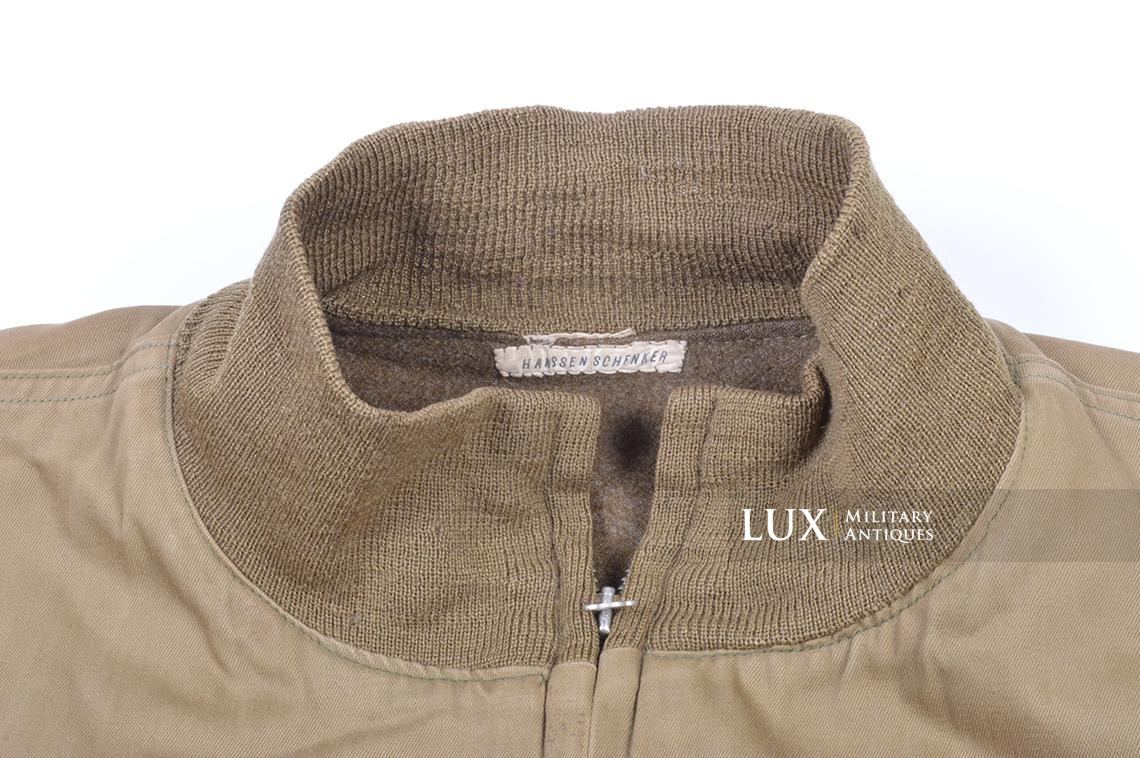

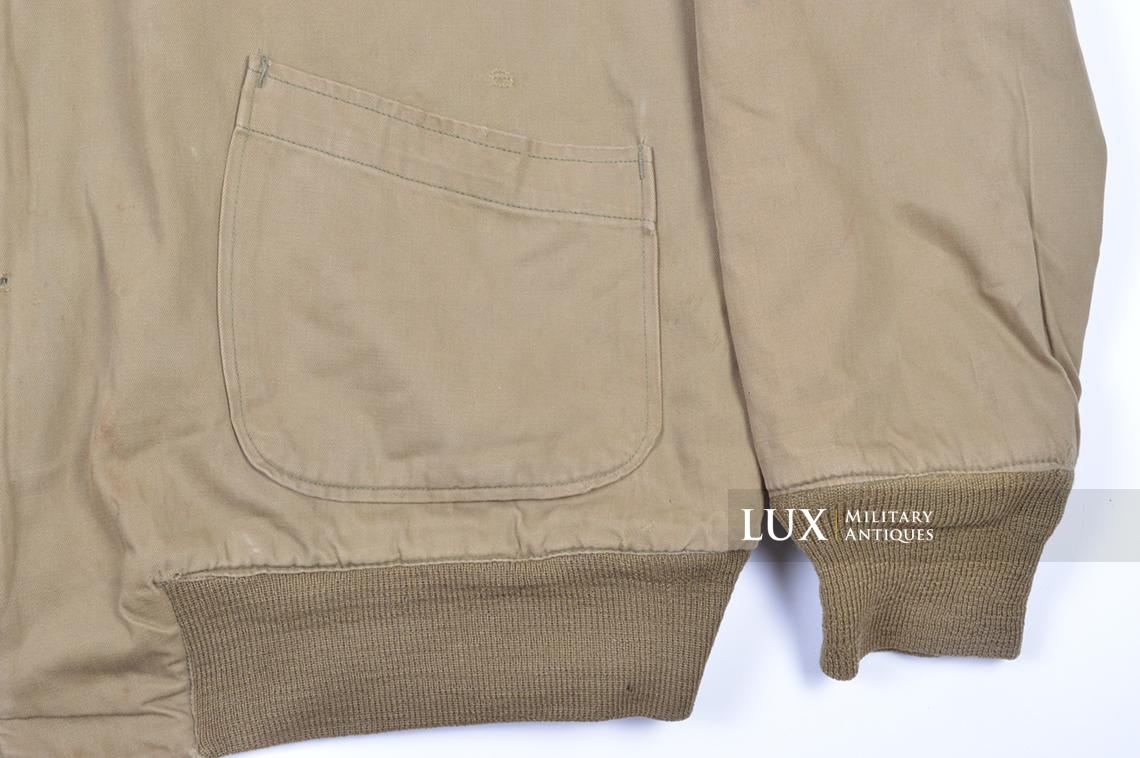




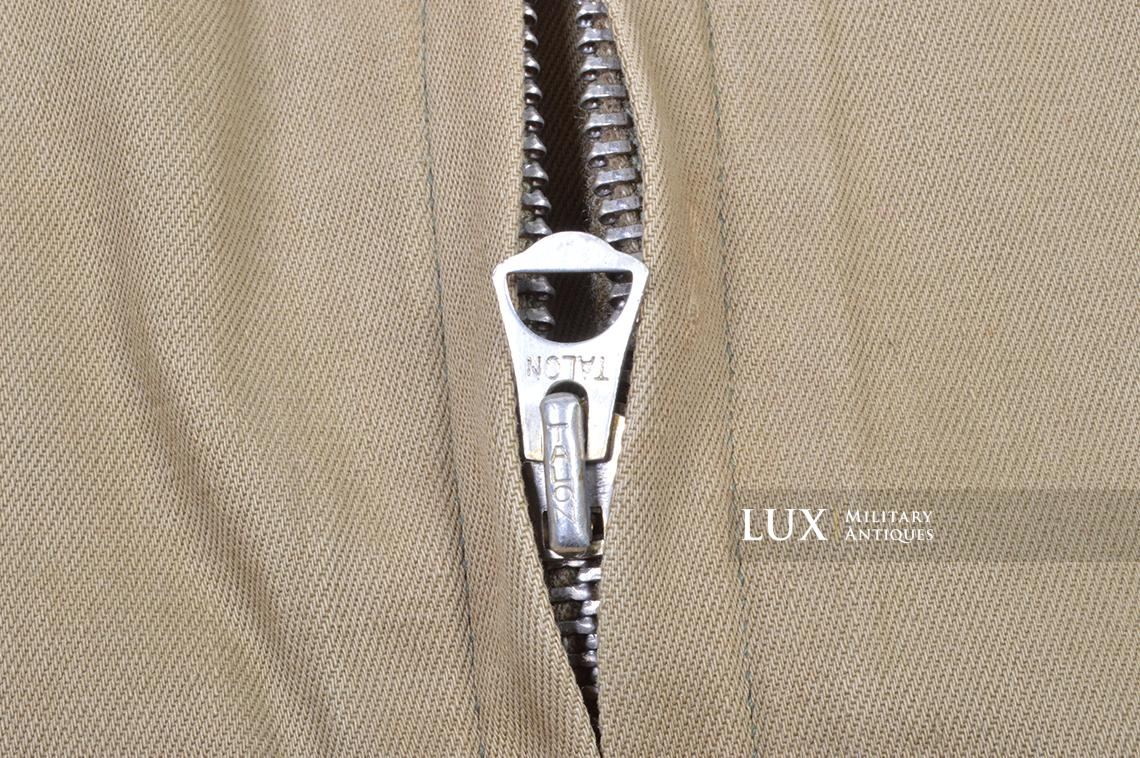

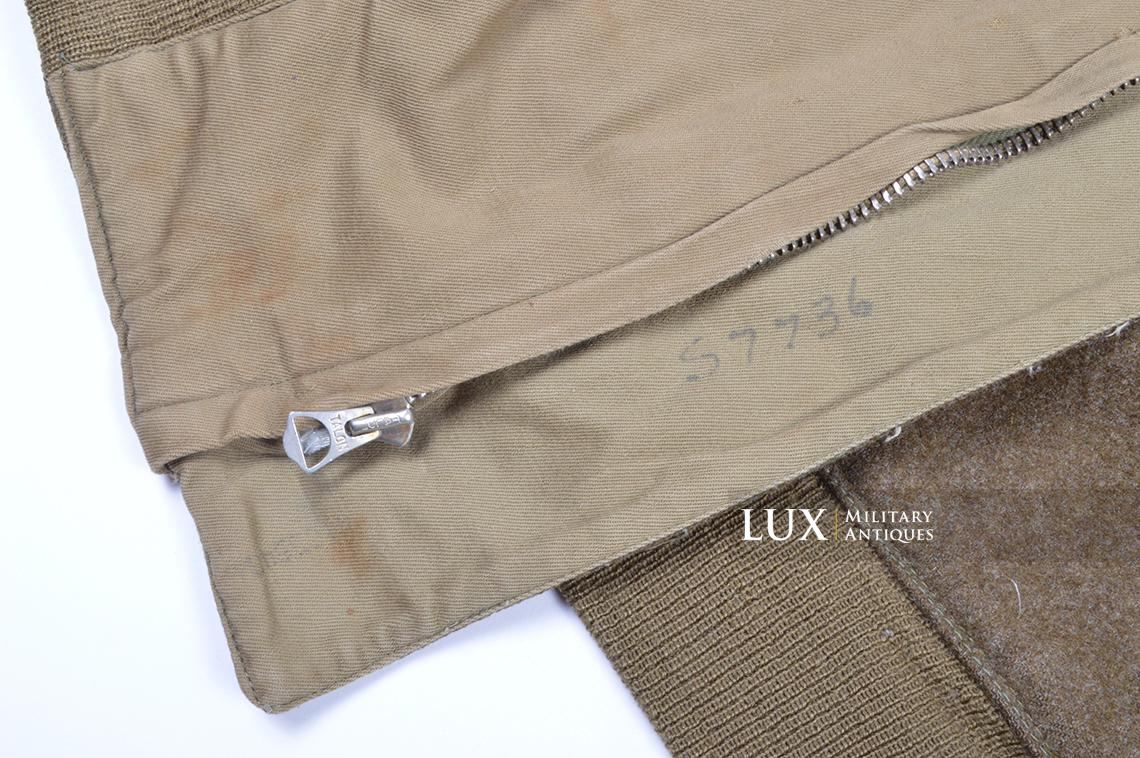
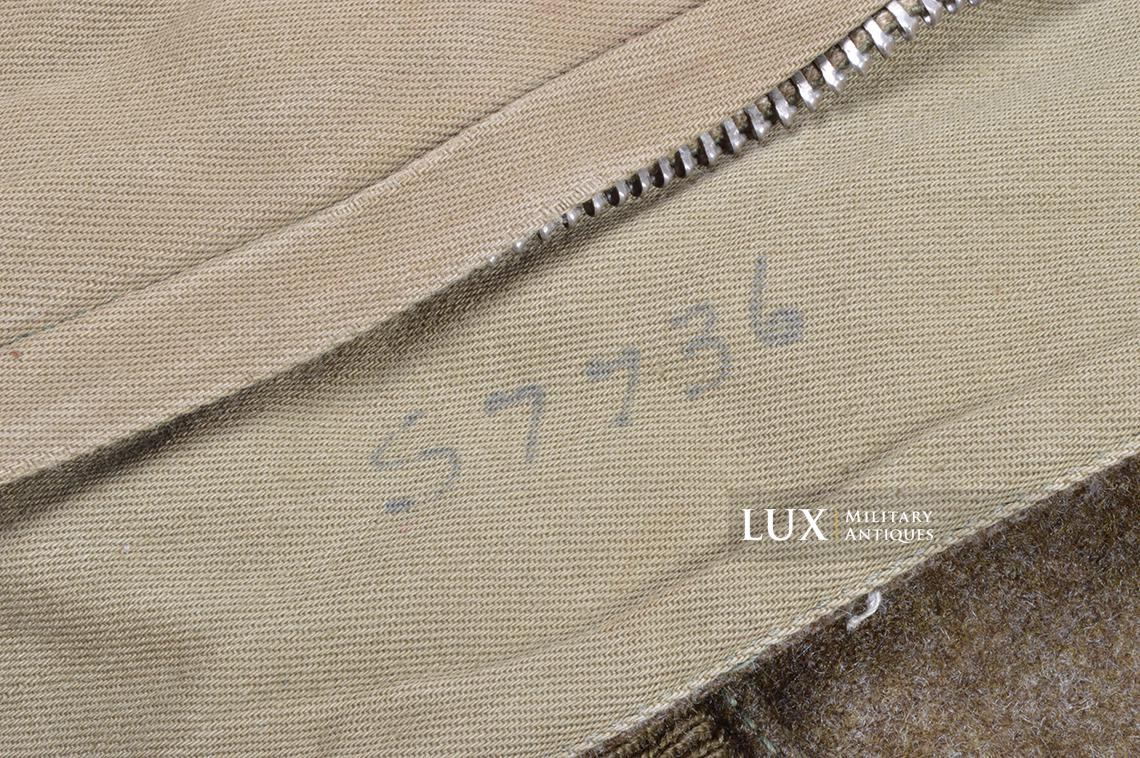
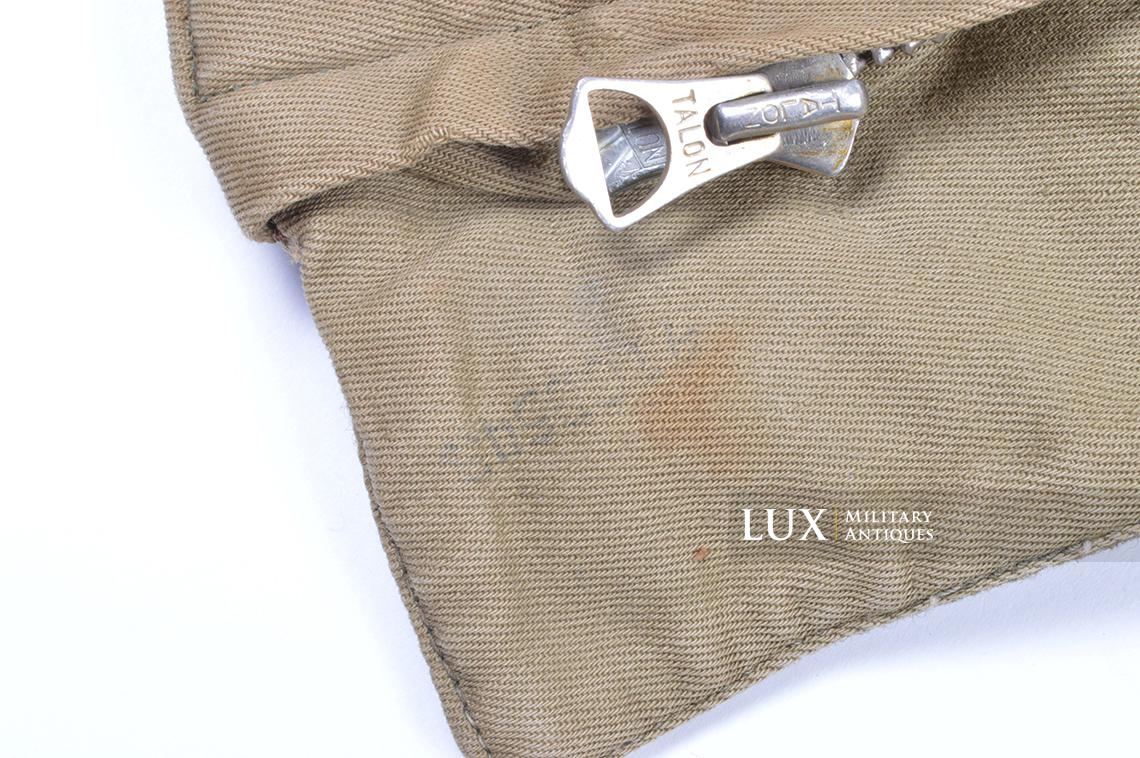


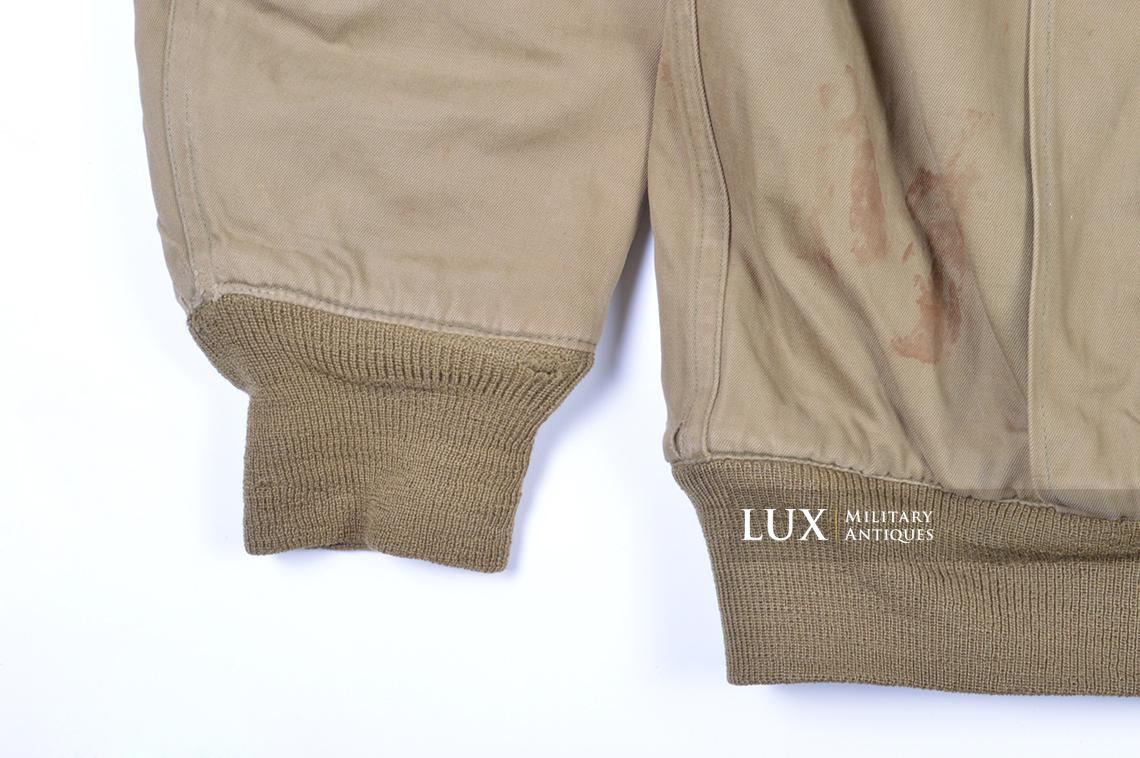



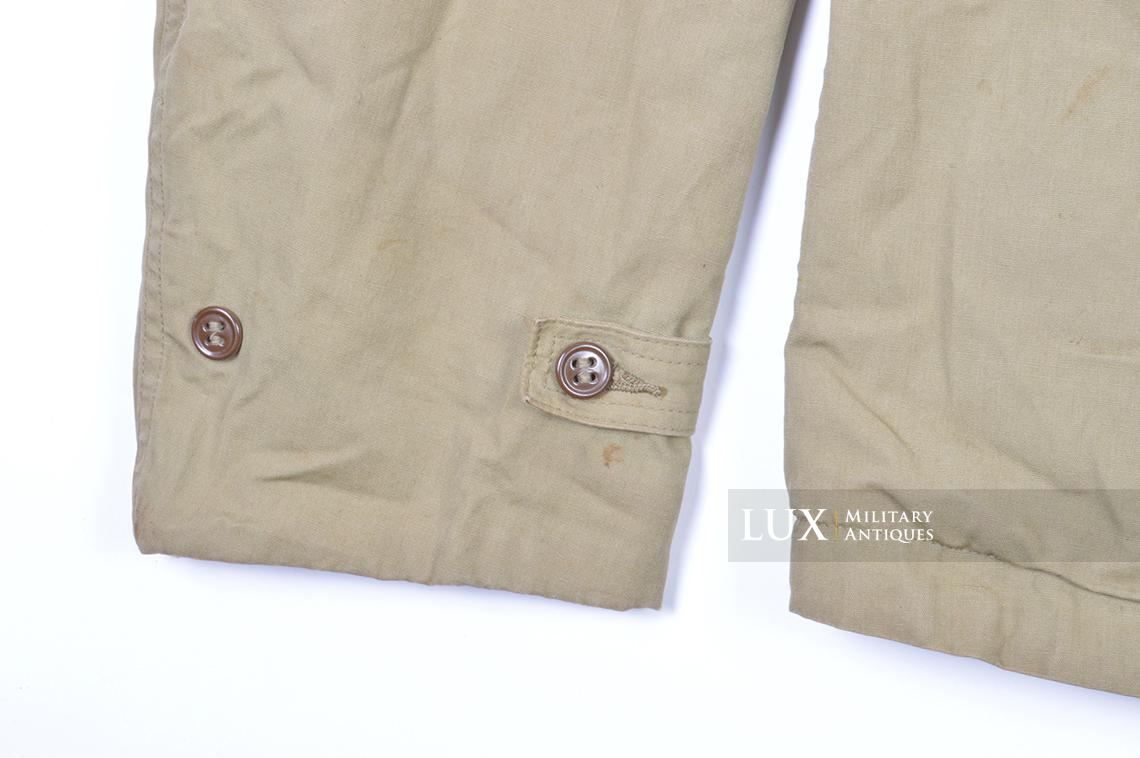
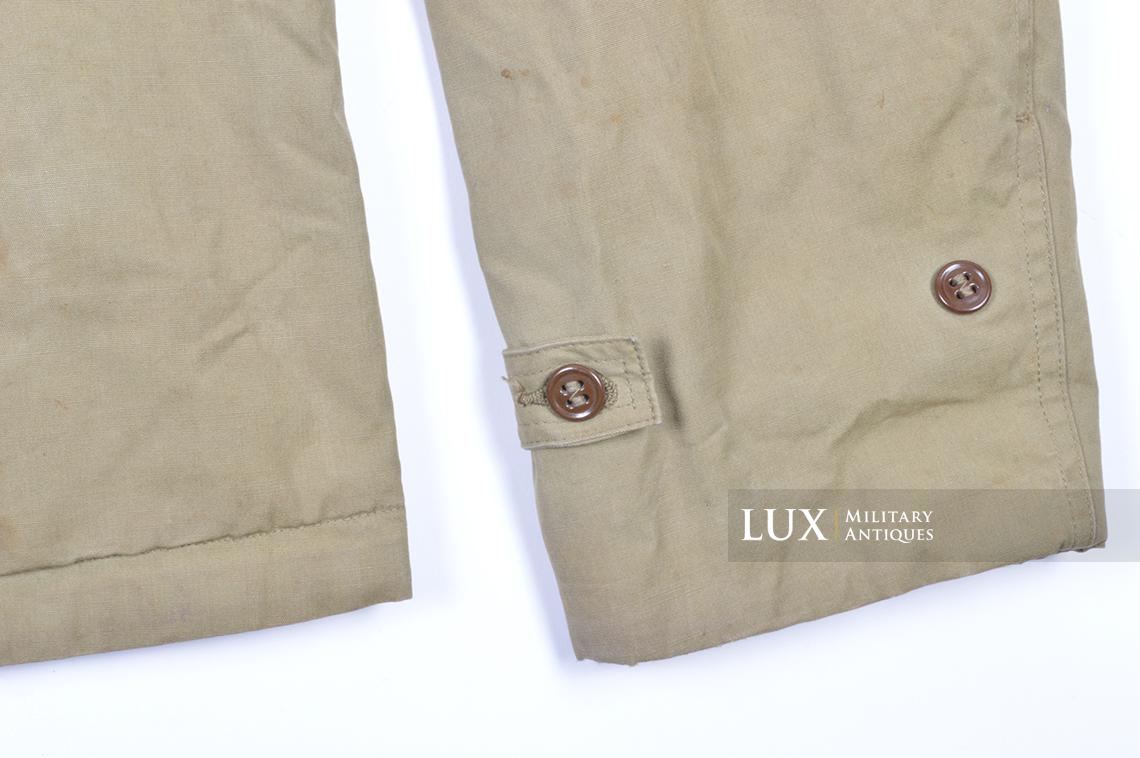
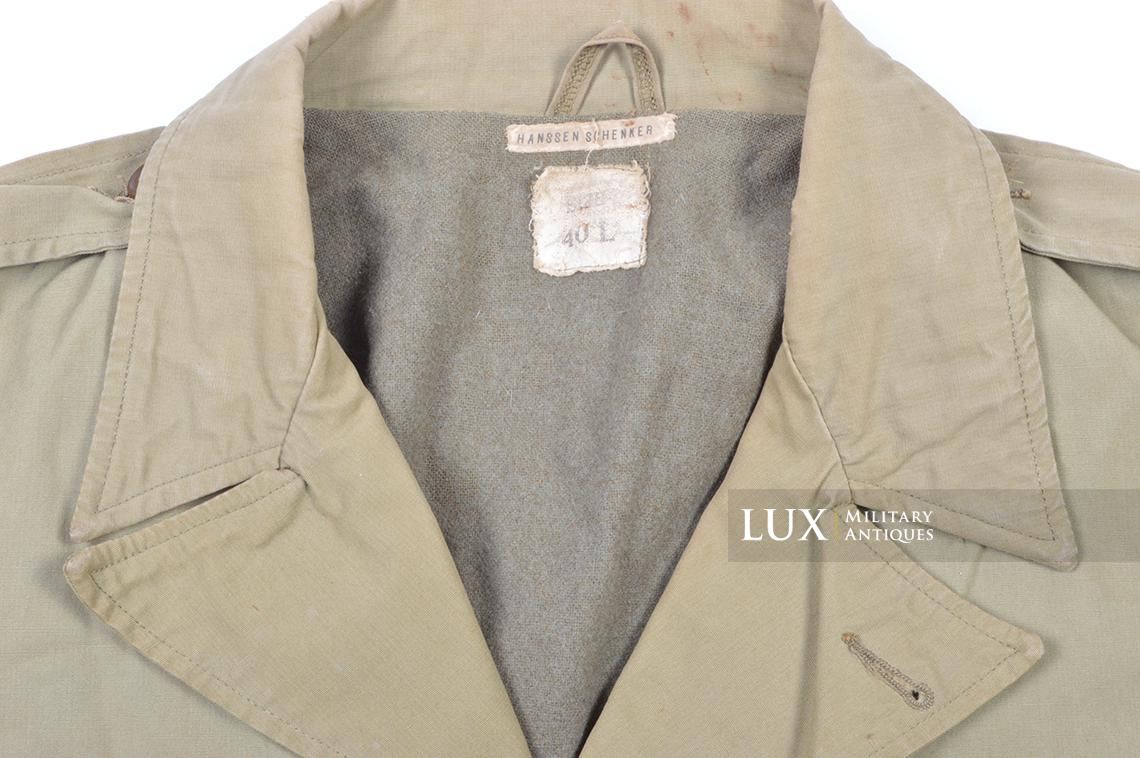
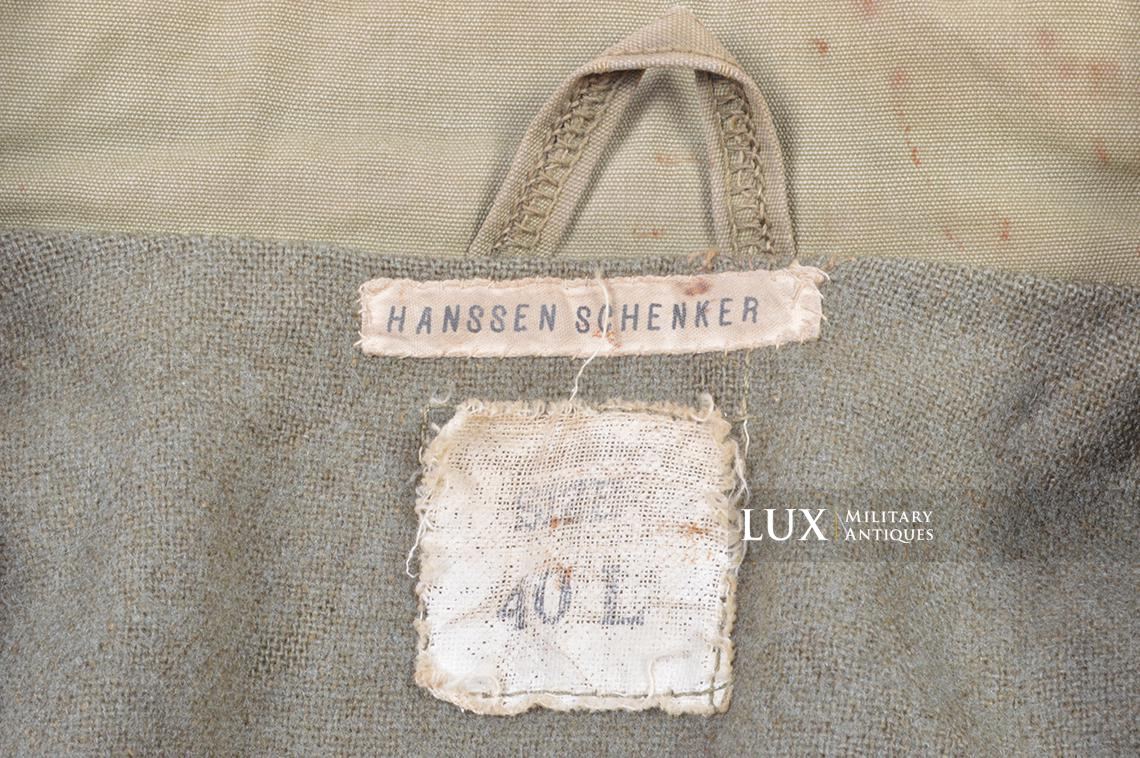

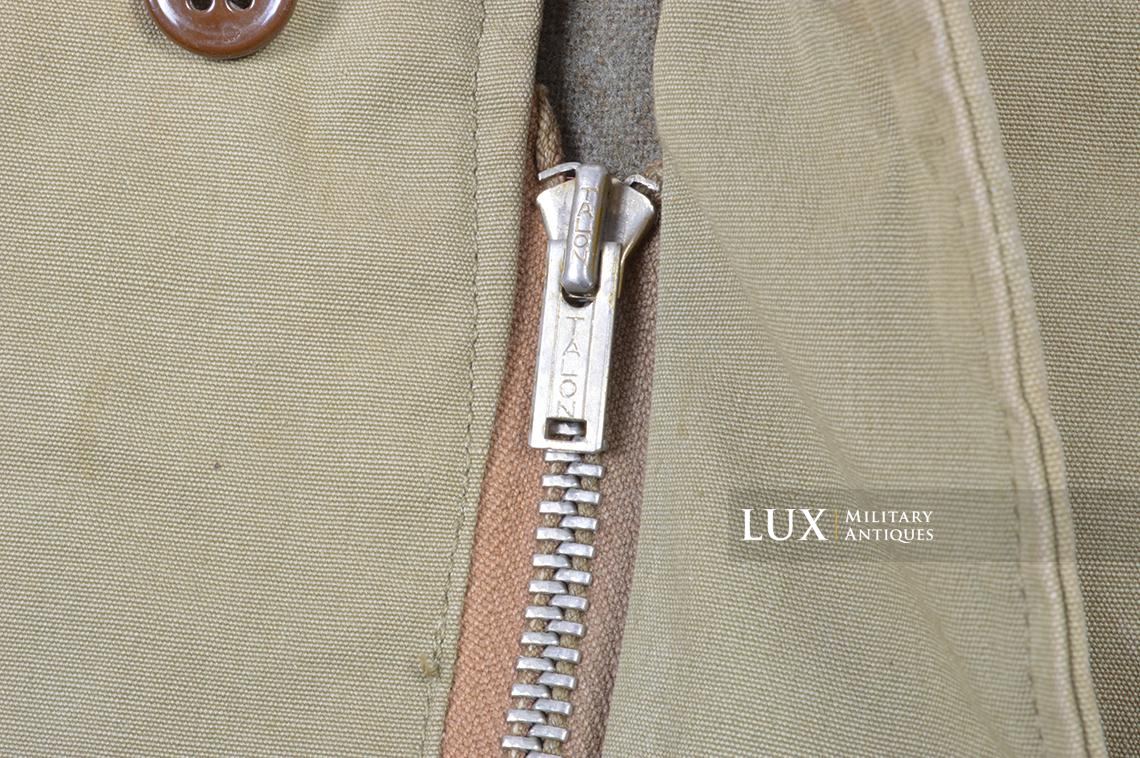
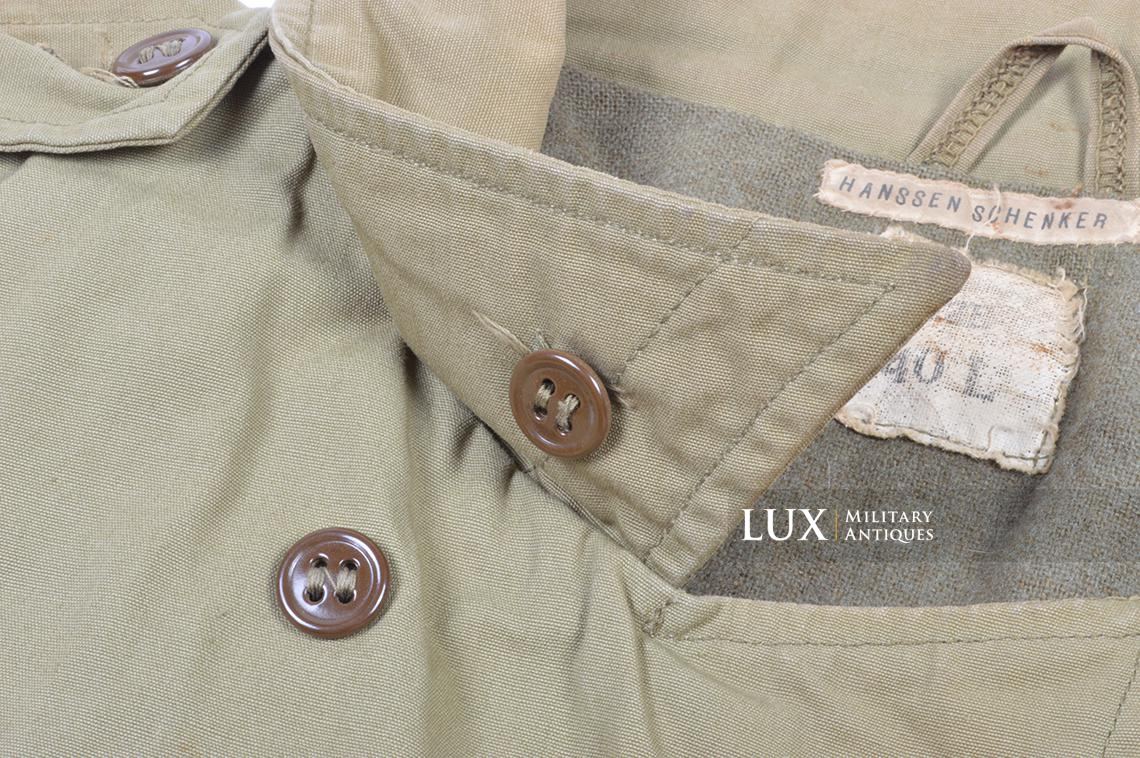
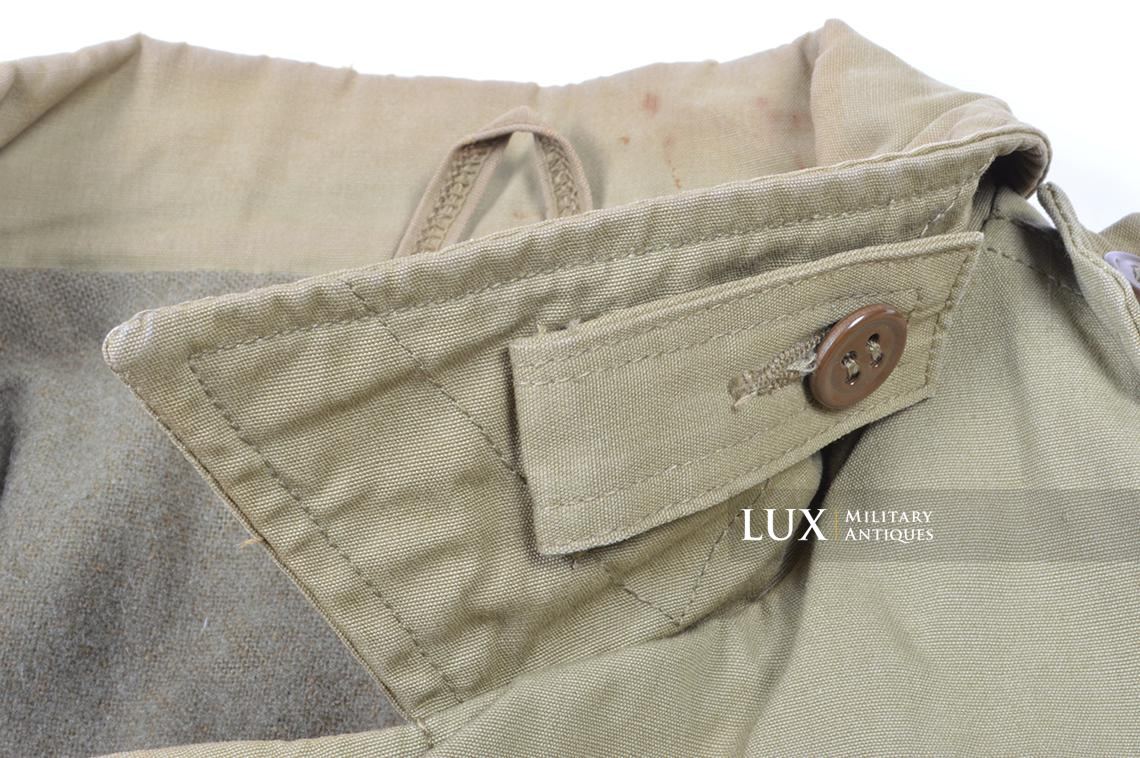

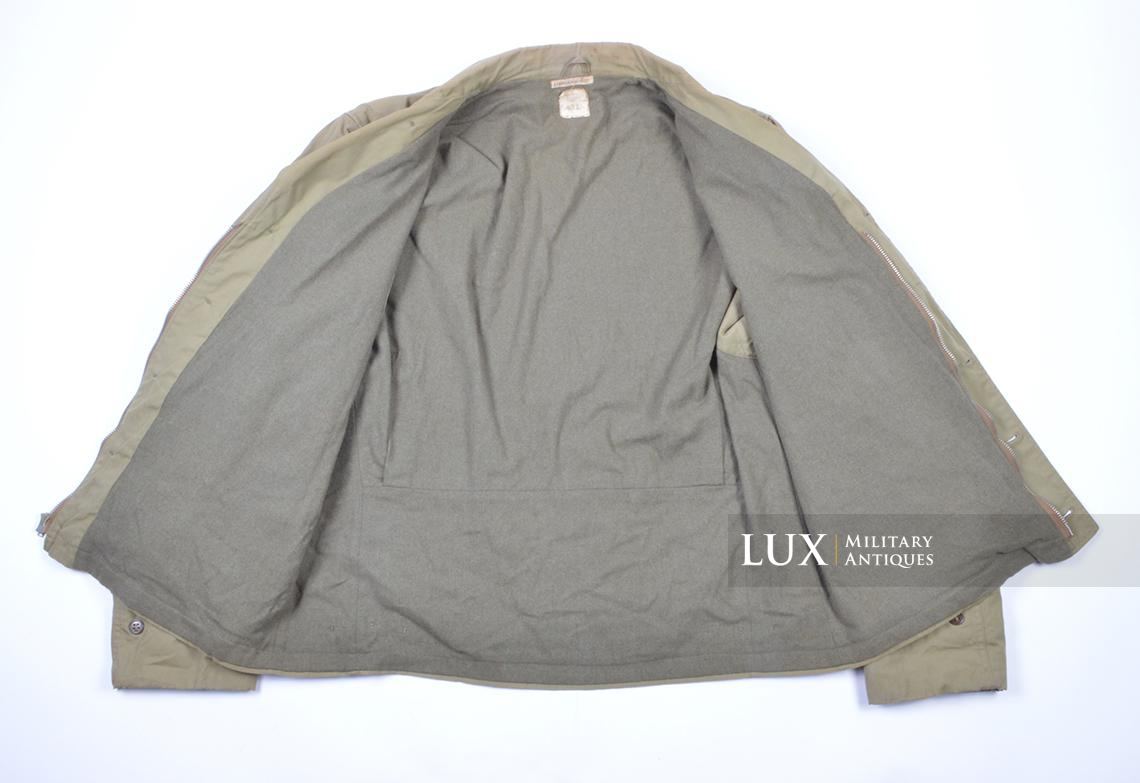
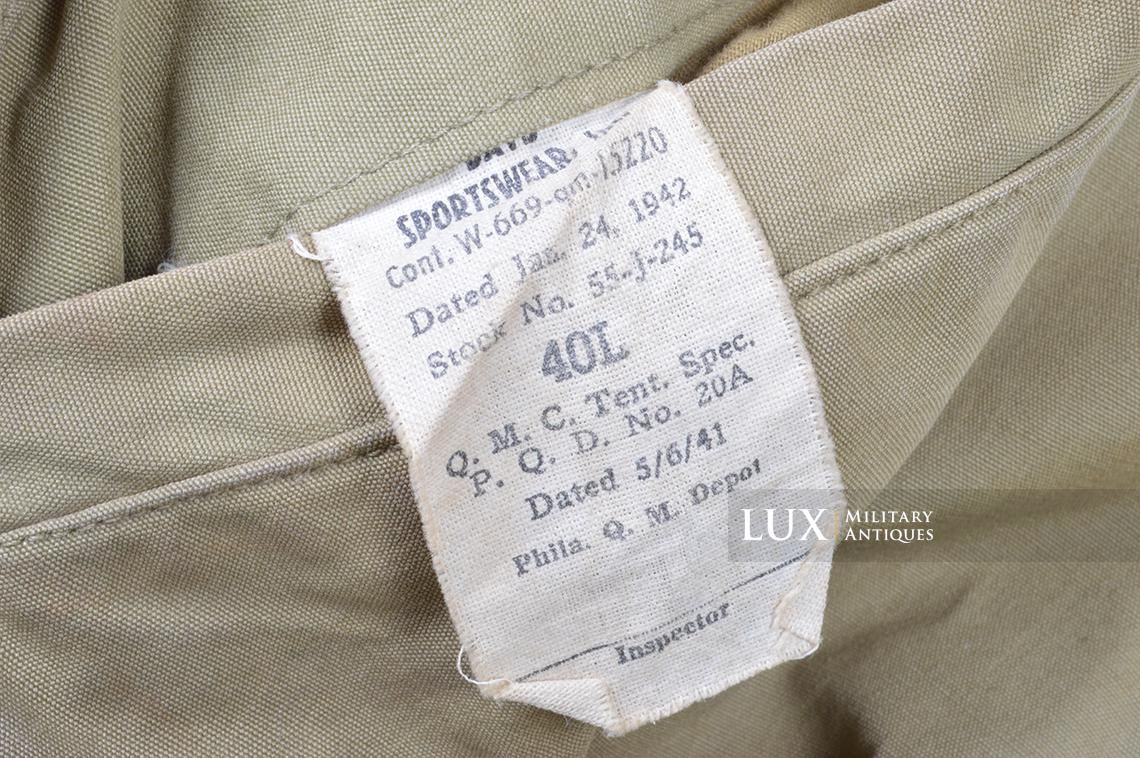


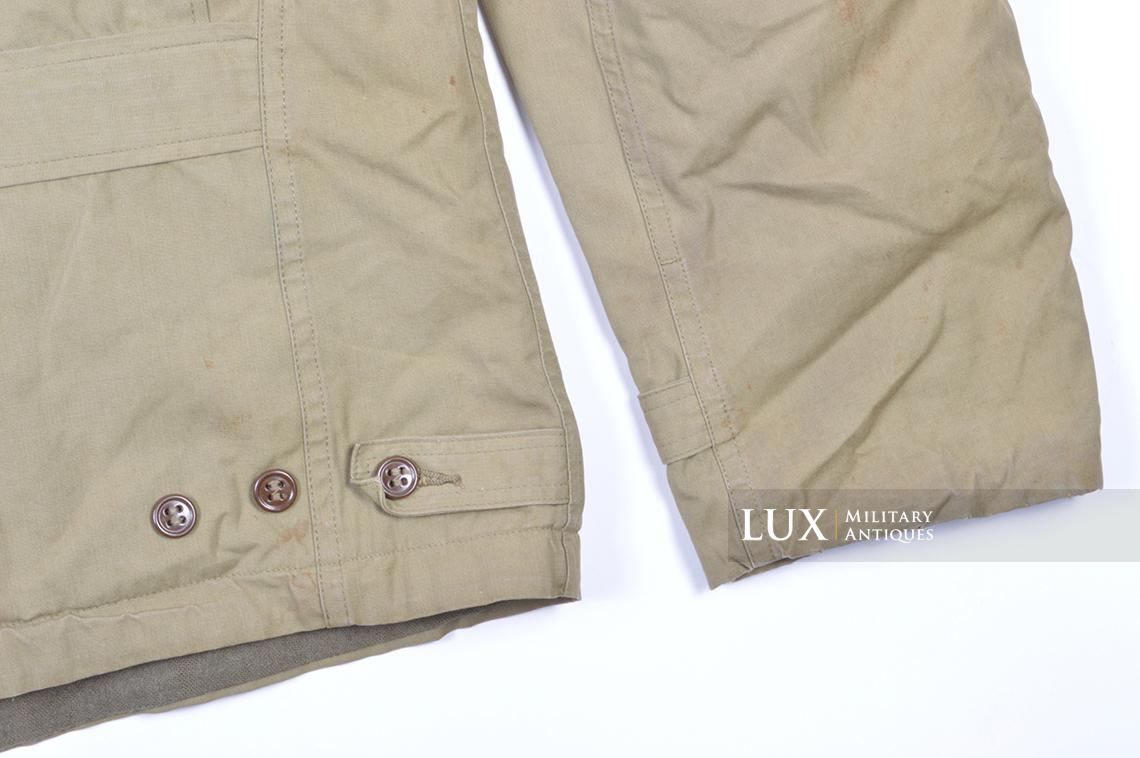


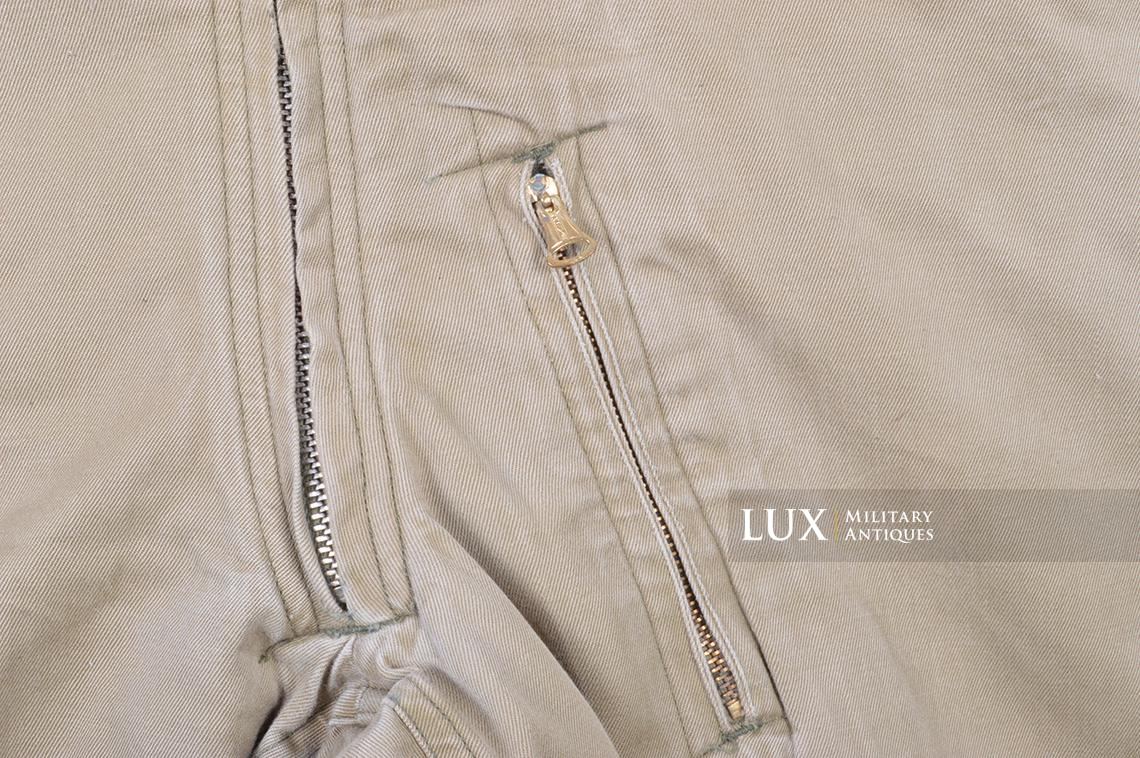




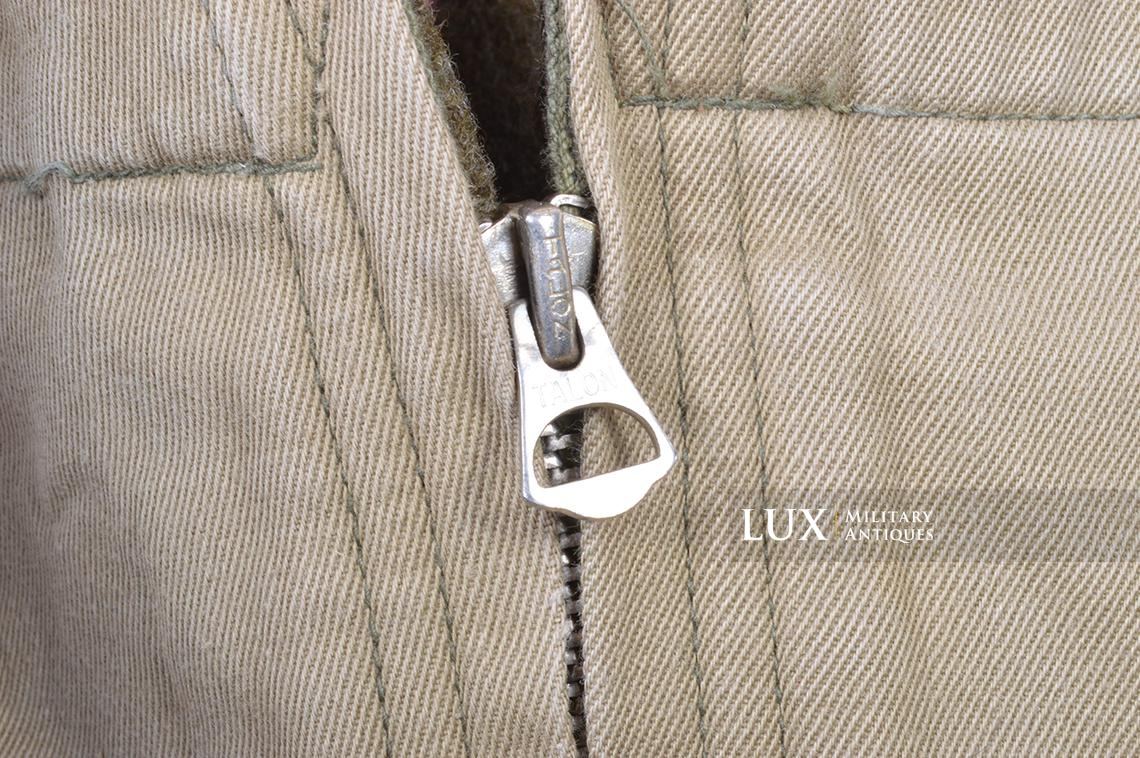

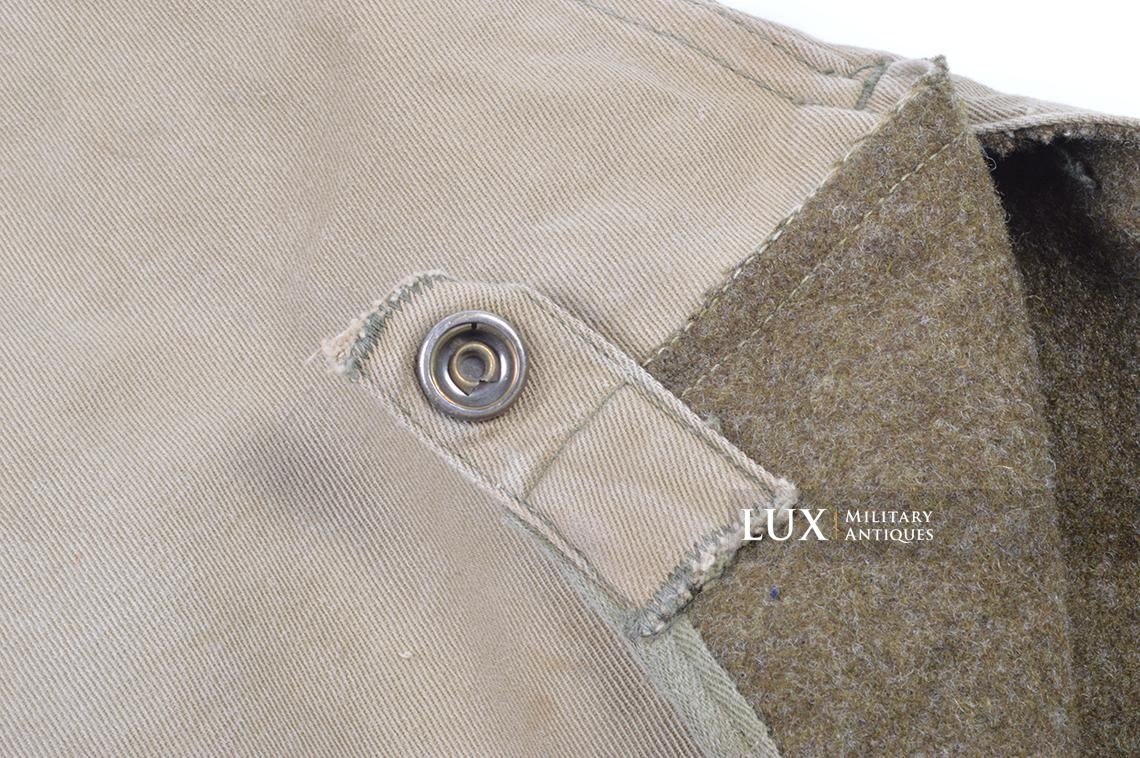
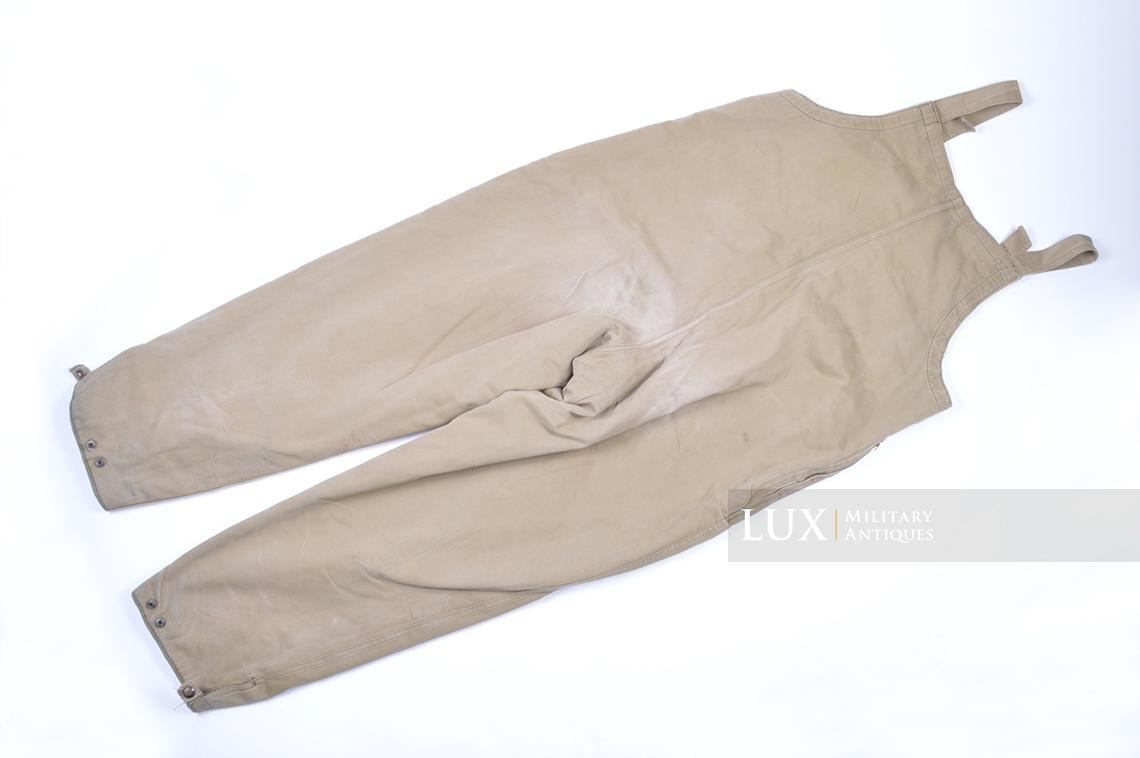

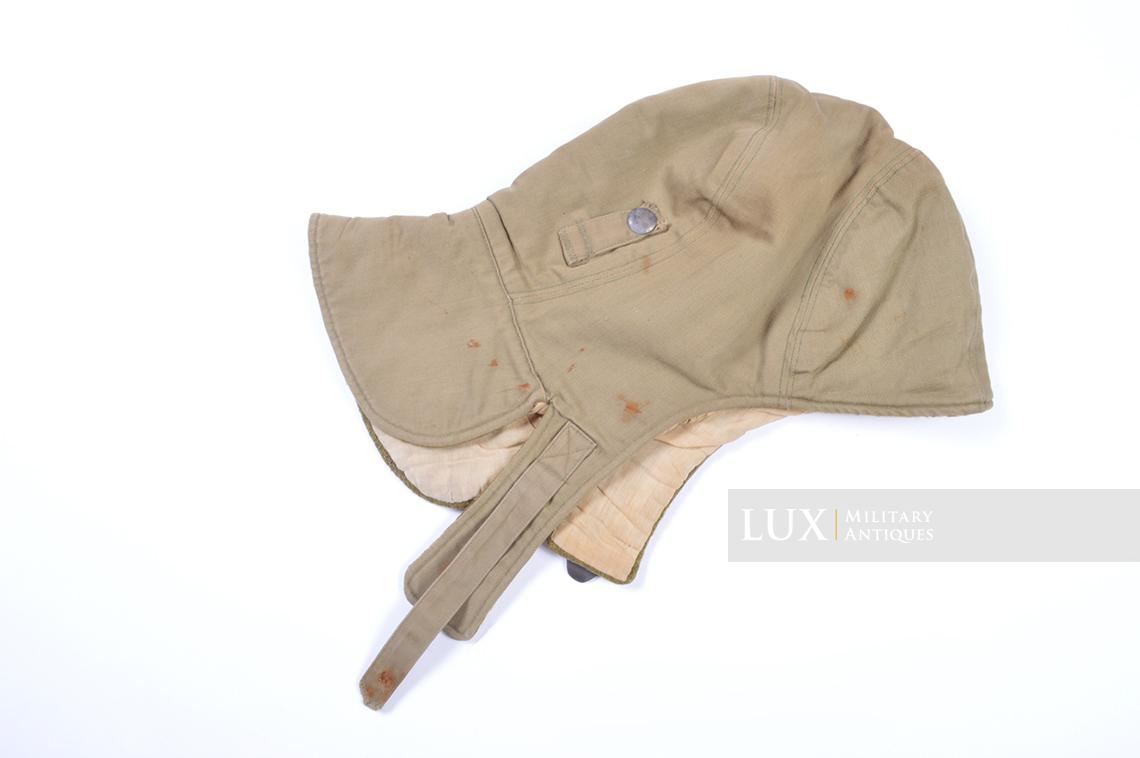
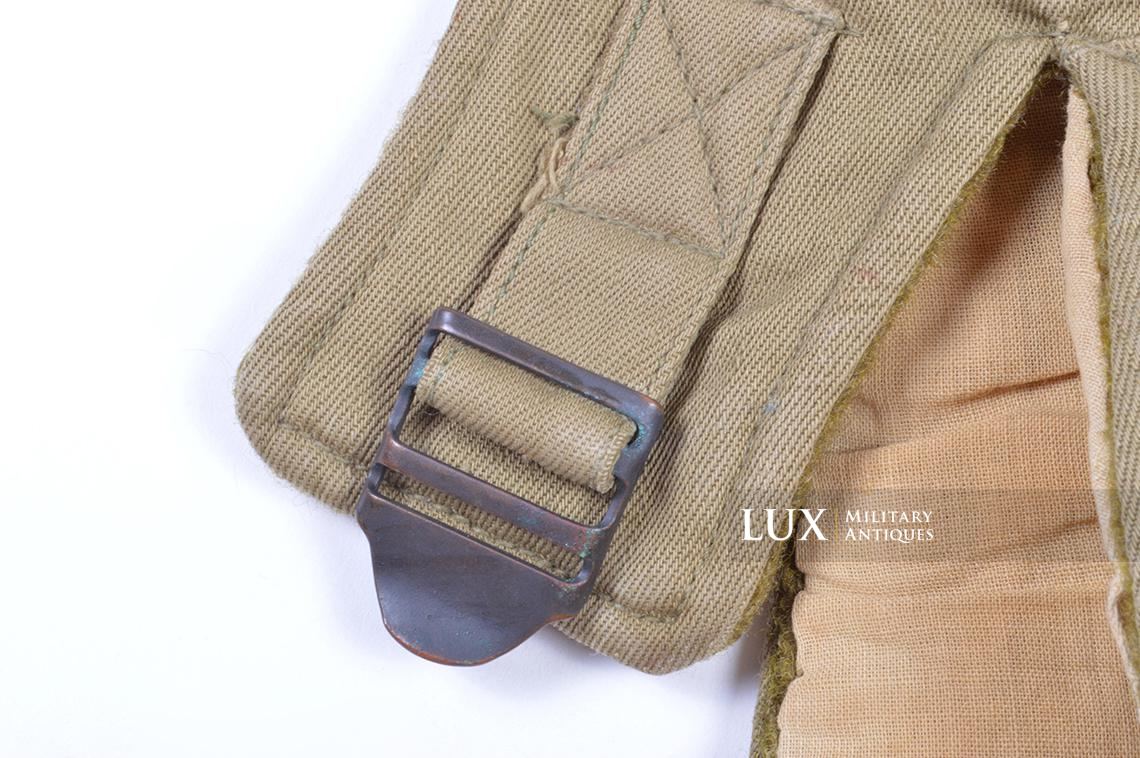


Guarantee
The items presented for sale by Lux Military Antiques are historical authentic period pieces. We are highly recognized by all our customers for our quality and authenticity of all the items presented on our site. We can issue a certificate of authenticity for each item ordered if desired. This can be done by simply choosing the "With Certificate of Authenticity" purchase option before placing an order. This can be useful for insurance purposes or for future selling of the item.
Payment Method
All payments are to be made in Euros (€). We accept various payment forms including: bank transfers , PayPal, cash payments, as well as credit cards. Credit card payments can be made on our site provided by Ingenico ePayments Security System.
Shipping Method
Shipping costs are automatically calculated based on the total weight/dimensions of the parcel and its delivery address. Deliveries are sent by the company TNT with the ability to track the package to its final destination. A tracking number and signature confirmation will be provided as well. If you prefer a more secure and insured shipment method by Fedex, simply contact us, and we will submit a request for a price for your shipment.















